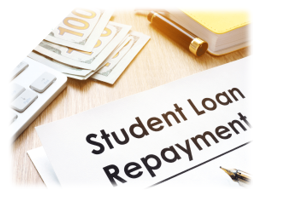How an Employer Can Help Employees with Student Loan Repayments
Given all the recent news about student loan repayments and the impact on both individual lives and the economy as a whole, we thought it was time to review what an employer can do to assist those either currently in post-secondary or technical schools as well as those who have graduated or become certified and now have student loans. As part of our administrative services, we offer custom benefit design to simplify these choices for both employers and employees.
First, Some Background on Employee Education and Student Loan Repayments
For decades employers have had limited tools to assist its employees (although not necessarily spouses and children) to go to post-secondary or technical schools to increase that employee’s ability to perform their job. The Tax Code provides certain tax-free benefits, should the employer choose to adopt plans, that enable the payment of up to $5,250 per year as a reimbursement for tuition, fees, and books that are directly related to that employee’s job. However, two recent law changes provide employers with some new tools to consider.
For qualified retirement programs such as 401(k), 403(b), and 457 plans, SECURE 2.0 enabled employers to optionally count Qualified Student Loan Payments (QSLPs) as if they were a regular elective contribution to those plans, and therefore provide an employer matching contribution. This was a win-win for both the employer and employee: the employee received a match not just on her regular elective contribution but on any qualified student loan repayments made, plus the employer typically was favorably impacted in nondiscrimination testing of a match as long as most of the QSLP benefits didn’t go to owners or other highly compensated employees.
Better still, the QSLP could be for repayment of a qualified education loan for the higher education of the employee, employee’s spouse, or an individual who was the employee’s dependent at the time the loan was taken. Employees had to self-certify at least annually that the loan payments were made, although an employer could require substantiation. Employers could begin offering a QSLP option for any plan year beginning on or after January 1, 2024, as long as it offered it to all participants in the plan.
And Another New (Albeit Temporary) Employer Tool
In addition, employers were also given a temporary tool through December 31, 2025 (unless Congress extends it) to provide a nontaxable benefit of up to $5,250 under Tax Code Section 127 for not just the usual items of tuition, fees, books, and certain other expenses but also for the repayment of qualified student loans. As you might imagine, there are a host of rules should an employer adopt such a plan.
- Like most tax-favored benefits, there must be a written plan document and operational procedures in place.
- The reimbursement benefits can be used to pay principal or interest or both on any qualified education loan incurred by an employee for the employee’s education and is not limited to that employee’s specific job. Note that unlike in the retirement plan scenario above, this benefit does not extend to spouses and other dependents of the employee.
- Employers that adopt such a program may choose to either reimburse the loan holder directly or the employee. There are of course advantages and disadvantages to both. If paying the loan holder directly the employer knows the exact amounts and can would have a good paper trail. If reimbursing the employee, the employer must adopt some form of either self-certification or substantiation to show that loan payments were made.
- If the employer does not make the same benefits available to all employees, it will need to demonstrate that benefit eligibility does not discriminate in favor of highly compensated employees. In addition, no more than 5% of the benefits paid during a year can be provided to more-than-5% owners (or their spouses or dependents who are employees). If an educational assistance program violates the nondiscrimination requirements, all participants lose favorable tax treatment for their benefits under the program—not just those in whose favor discrimination is prohibited.
If you wish to consider either type of benefit for your employees, please reach out to us at Kushner & Company.


